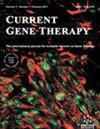光遗传学:照亮听力恢复和理解听觉感知的未来
IF 3.8
4区 医学
Q2 GENETICS & HEREDITY
引用次数: 0
摘要
:听力损失是一种普遍的感官障碍,严重影响交流和生活质量。传统的听力恢复方法(如人工耳蜗)在频率分辨率和空间选择性方面存在局限性。光遗传学是一个利用光敏感蛋白的新兴领域,它为解决这些局限性并彻底改变听力康复提供了一个前景广阔的途径。本综述探讨了将一种关键的光敏感蛋白--通道发光素 2(ChR2)引入耳蜗细胞以实现光遗传刺激的方法。病毒介导的基因传递是光遗传学中广泛使用的一种技术。选择合适的病毒载体(如腺相关病毒(AAV))是向耳蜗细胞有效传递基因的关键。通过分子克隆技术将 ChR2 基因插入病毒载体,然后通过直接注射或圆窗膜输送将病毒载体导入耳蜗细胞。这样就能在目标细胞中表达 ChR2 并随之产生光敏感性。另外,直接细胞转染也是一种非病毒的 ChR2 导入方法。ChR2 基因被克隆到质粒载体中,然后与脂质体或纳米颗粒等转染剂结合。将这种混合物应用于耳蜗细胞,促进质粒 DNA 进入靶细胞,实现 ChR2 的表达。利用 ChR2 进行光遗传刺激,可以精确、有选择性地激活特定神经元对光做出反应,从而有可能克服目前听觉假体的局限性。此外,光遗传学在了解听觉处理和行为所涉及的神经回路方面具有更广泛的意义。光遗传学与基因递送技术的结合为改善听力恢复策略提供了一条前景广阔的途径,为提高频率分辨率、空间选择性和改善听觉感知提供了可能。本文章由计算机程序翻译,如有差异,请以英文原文为准。
Optogenetics: Illuminating the Future of Hearing Restoration and Understanding Auditory Perception
: Hearing loss is a prevalent sensory impairment significantly affecting communication and quality of life. Traditional approaches for hearing restoration, such as cochlear implants, have limitations in frequency resolution and spatial selectivity. Optogenetics, an emerging field utilizing light-sensitive proteins, offers a promising avenue for addressing these limitations and revolutionizing hearing rehabilitation. This review explores the methods of introducing Channelrhodopsin- 2 (ChR2), a key light-sensitive protein, into cochlear cells to enable optogenetic stimulation. Viral- mediated gene delivery is a widely employed technique in optogenetics. Selecting a suitable viral vector, such as adeno-associated viruses (AAV), is crucial in efficient gene delivery to cochlear cells. The ChR2 gene is inserted into the viral vector through molecular cloning techniques, and the resulting viral vector is introduced into cochlear cells via direct injection or round window membrane delivery. This allows for the expression of ChR2 and subsequent light sensitivity in targeted cells. Alternatively, direct cell transfection offers a non-viral approach for ChR2 delivery. The ChR2 gene is cloned into a plasmid vector, which is then combined with transfection agents like liposomes or nanoparticles. This mixture is applied to cochlear cells, facilitating the entry of the plasmid DNA into the target cells and enabling ChR2 expression. Optogenetic stimulation using ChR2 allows for precise and selective activation of specific neurons in response to light, potentially overcoming the limitations of current auditory prostheses. Moreover, optogenetics has broader implications in understanding the neural circuits involved in auditory processing and behavior. The combination of optogenetics and gene delivery techniques provides a promising avenue for improving hearing restoration strategies, offering the potential for enhanced frequency resolution, spatial selectivity, and improved auditory perception.
求助全文
通过发布文献求助,成功后即可免费获取论文全文。
去求助
来源期刊

Current gene therapy
医学-遗传学
CiteScore
6.70
自引率
2.80%
发文量
46
期刊介绍:
Current Gene Therapy is a bi-monthly peer-reviewed journal aimed at academic and industrial scientists with an interest in major topics concerning basic research and clinical applications of gene and cell therapy of diseases. Cell therapy manuscripts can also include application in diseases when cells have been genetically modified. Current Gene Therapy publishes full-length/mini reviews and original research on the latest developments in gene transfer and gene expression analysis, vector development, cellular genetic engineering, animal models and human clinical applications of gene and cell therapy for the treatment of diseases.
Current Gene Therapy publishes reviews and original research containing experimental data on gene and cell therapy. The journal also includes manuscripts on technological advances, ethical and regulatory considerations of gene and cell therapy. Reviews should provide the reader with a comprehensive assessment of any area of experimental biology applied to molecular medicine that is not only of significance within a particular field of gene therapy and cell therapy but also of interest to investigators in other fields. Authors are encouraged to provide their own assessment and vision for future advances. Reviews are also welcome on late breaking discoveries on which substantial literature has not yet been amassed. Such reviews provide a forum for sharply focused topics of recent experimental investigations in gene therapy primarily to make these results accessible to both clinical and basic researchers. Manuscripts containing experimental data should be original data, not previously published.
 求助内容:
求助内容: 应助结果提醒方式:
应助结果提醒方式:


